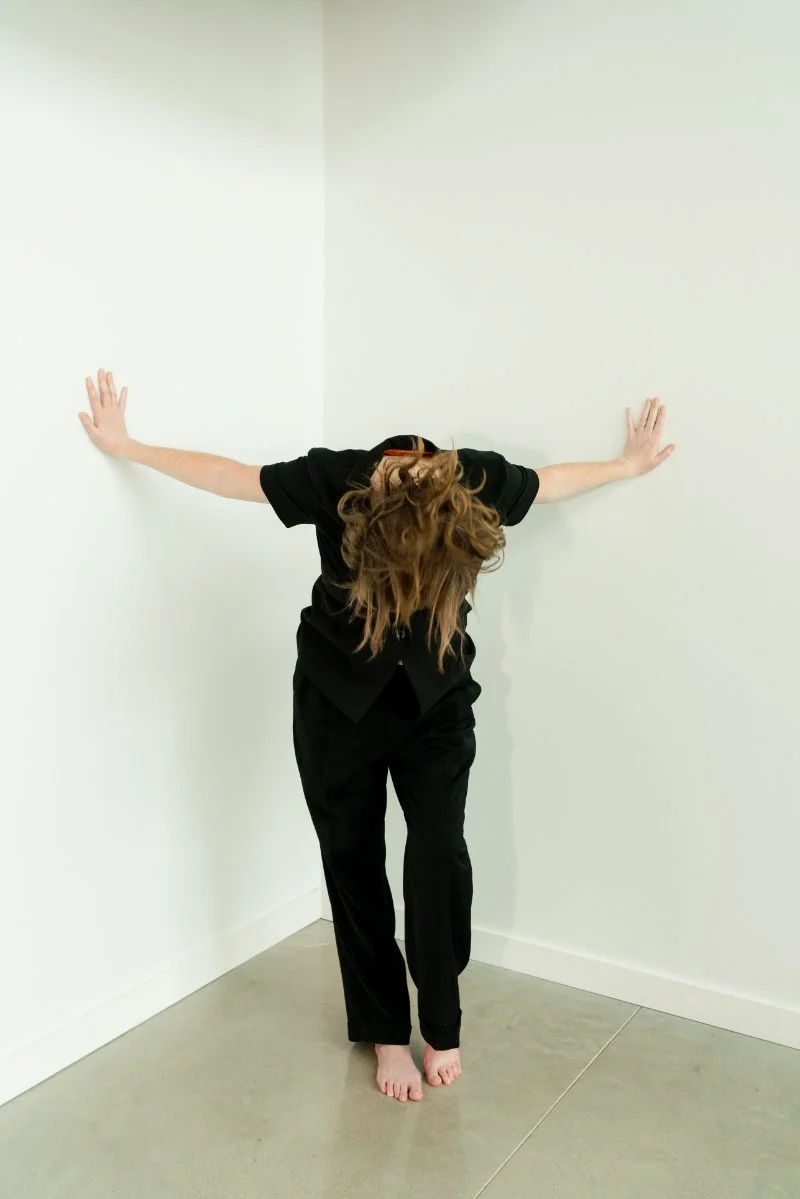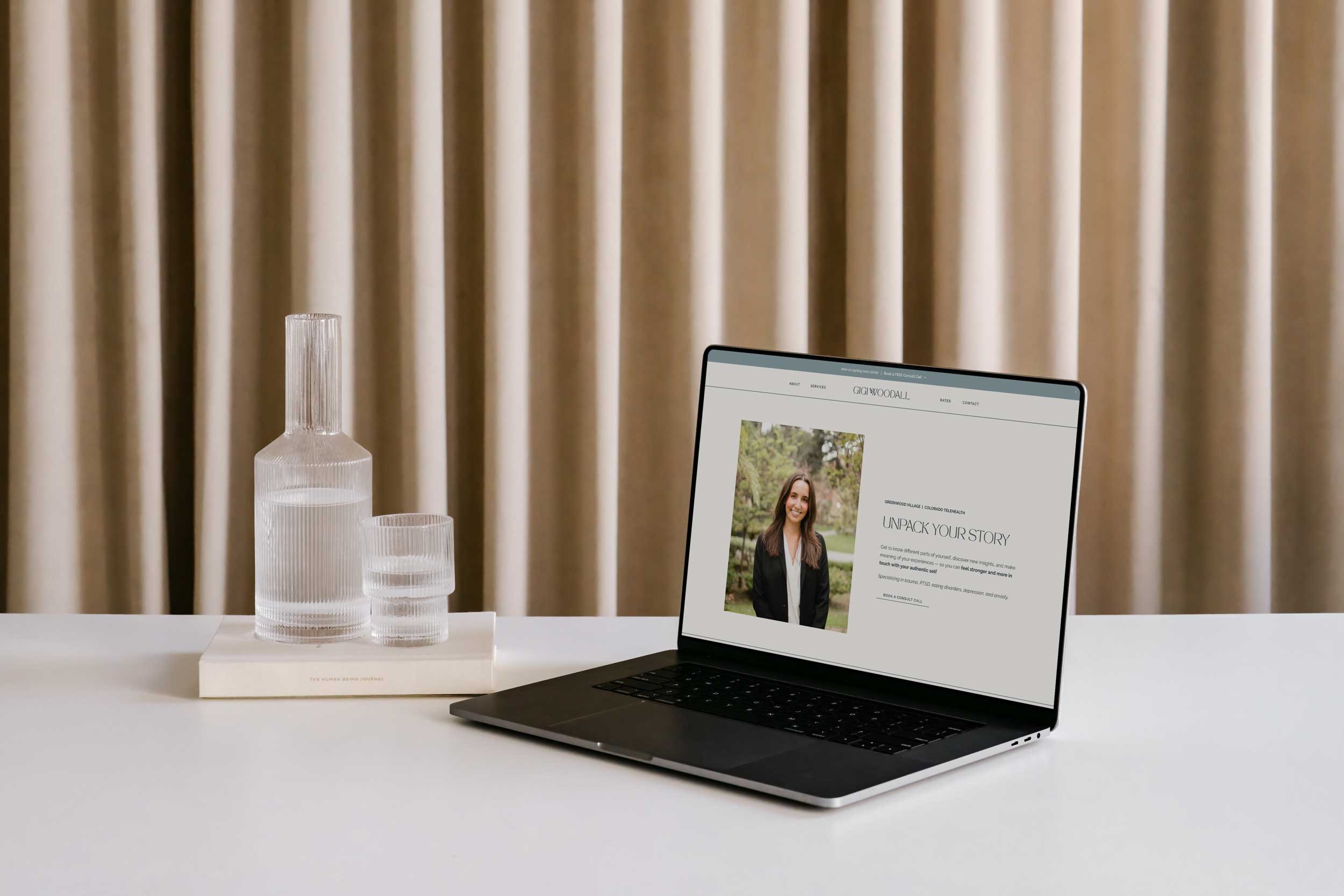Website Design Tips for Beginners: What First-Time Website Clients Need to Know Before Hiring a Designer
So, you’ve decided it’s time to build a professional website for your private practice or business—maybe you're launching, rebranding, or finally upgrading from that DIY page you threw together years ago. Either way, you’re considering hiring a designer for the first time and wondering… what now?
Before you dive into layouts and logos, let’s talk through some real-world website design tips for beginners. Because while a designer will take a lot off your plate, the best results come when you understand what to expect—and what you’re responsible for.
This guide is for therapists, coaches, and wellness pros stepping into their first design project. I’ll walk you through what to prep, how to communicate, and how to set yourself (and your site) up for success.
But first—hey there! I’m Emily. I design creative, strategic one-page websites . If you’re ready to create a website that connects with your dream clients, Book a discovery call with me today!
Start Here: What You Actually Need Before You Hire a Designer
One of the biggest mistakes first-time clients have? Thinking they need everything figured out before reaching out to a designer.
Spoiler: You don’t.
But there are a few key things that are helpful to have in place—or at least be thinking about.
Here’s what’s helpful to have ready:
A clear understanding of who your ideal client is
The core services or offerings you want to feature
Basic brand direction (colors, fonts, vibe—even if it’s just a mood board)
A working title for your business or practice
A rough idea of the pages or sections you’ll need
If you have those things, you’re in a great place to begin. The rest can be figured out with the support of your designer—which is why you’re hiring one in the first place.
Communicate Your Goals, Not Just Your Aesthetic
Next up on the list of essential website design tips for beginners: focus on your goals, not just your favorite colors. It’s totally fine to come in with visual preferences (like, “I want something minimal and calming”), but what’s even more helpful is explaining why you’re building the site in the first place.
For example:
Are you hoping to attract more private-pay clients?
Do you want to book more discovery calls?
Are you shifting your niche and need your website to reflect that?
Is SEO a priority for you?
When your designer understands your goals, they can make smarter decisions about layout, user experience, and structure. That’s how you get a website that doesn’t just look good—it actually works.
And speaking of working with your designer...
What Your Designer Actually Does (And What’s Your Job)
One of the most misunderstood parts of web design projects is who’s responsible for what. Here’s a quick breakdown to help set expectations and avoid headaches.
What your designer handles:
Designing and building the site (layout, typography, colors, etc.)
Creating a cohesive, on-brand look and feel
Setting up your site on a platform like Squarespace
Styling your blog, contact form, and other core features
Making sure your site works well on mobile
What you need to provide:
Website copy (aka the actual words on each page)
Photos and images (including headshots or brand imagery)
Any branding assets you already have (logos, color palettes, etc.)
Direction on your services, ideal client, and goals
This is one of those website design tips for beginners that saves everyone time. If you’re not sure how to write your copy, let your designer know—many either offer copywriting as an add-on or can refer you to someone who does.
Why “Just Make It Look Nice” Isn’t Super Helpful
If you only remember one thing from this post, let it be this: great design solves problems—it doesn’t just look pretty. When a client says, “Just make it look nice,” it puts a designer in a tricky spot. Because sure, they can make it look visually appealing—but how it looks should be based on what it needs to do.
Designing a homepage for a therapist who wants to attract trauma clients looks different than designing for a coach offering group programs. The structure, tone, and calls-to-action will all shift based on your goals.
So instead of defaulting to aesthetics alone, focus on what you want visitors to do when they land on your site. Do you want them to book a call? Fill out a contact form? Read your blog? Clarity here leads to a much stronger, more intentional design.
Ready to Build a Website That Reflects Your Practice?
Working with a web designer for the first time can feel like a big step—but it doesn’t have to be overwhelming. When you understand the process, know what to prepare, and come in with a clear sense of your goals, you’ll set the project (and yourself) up for success.
Thinking about working with a designer for the first time? I’d love to help. I specialize in simple, strategic one-page websites for therapists, coaches, and wellness professionals who want a clear, confident online presence.
Let’s talk about creating a website that connects with your dream clients!
Oh, and don’t leave without picking up some free resources. Whether you need a ready-to-use Lead Magnet Template, a step-by-step guide to gathering testimonials with The Feedback Formula, or the Ultimate Blog Writing Checklist, I’ve got you. Grab yours today!





























